- The Best 9 Real-Time Inventory Tracking Software
- Final Verdict: Choosing the Right Inventory Software
- Frequently Asked Questions
Table of Contents
Top 9 Real Time Inventory Tracking Software in 2026

In today’s fast-paced supply chain, not having real time inventory tracking software in place can make or break a business. Imagine running a retail chain and only discovering an item is sold out after customers complain – that’s the risk without real-time tracking.
Traditional stock checks via spreadsheets can’t keep up with modern omnichannel sales. The solution is real time inventory software, which provides up-to-the-minute visibility across warehouses, stores, and e-commerce channels.
These powerful inventory management analysis tools give decision-makers instant data to prevent stockouts and optimize stock levels.
This article reviews the top 9 real-time inventory tracking software solutions in 2026. We’ll compare their real-time features, key integrations, ideal business fit, and regional strengths.
By understanding what each offers, enterprise and retail decision-makers can identify which inventory management analysis tools best fit their operations and take a transformative step toward improved efficiency, visibility, and profitability.
The Best 9 Real-Time Inventory Tracking Software
Below is a quick comparison of the nine leading platforms for real-time it inventory and their core strengths.
Software | Key Features | Best For | Starting Price (USD) | Free Trial |
| Zoho Inventory | Real-time sync, multi-channel, affordable | Small to midsize e-commerce businesses | $0 (Free plan) | Yes, 14 days |
| NetSuite ERP | Full ERP suite, multi-location, advanced analytics | Large enterprises across regions | Custom pricing | Yes, 14 days |
| QuickBooks Commerce | QuickBooks integration, B2B features | SMBs using QuickBooks in the US | Integrated with QuickBooks Online | Yes, 30 days |
| Cin7 | Unified POS + eCommerce, rich automation | Growing retailers & wholesalers | $349/month | Yes, 14 days |
| Fishbowl Inventory | Manufacturing support, barcode tracking | QuickBooks users in manufacturing | $349/month | Yes, 14 days |
| inFlow Inventory | Cloud/on-premise, barcode, forecasting | Small businesses scaling up | $110/month | Yes, 14 days |
| Ordoro | Dropshipping, label printing, bundling | Multi-channel online retailers | $59/month | Yes, 15 days |
| Odoo Inventory | Modular ERP, customizable, open-source | Flexible ERP for SMBs to large firms | $24/user/month | Yes, 15 days |
| Katana MRP | Manufacturing-focused, real-time production tracking | D2C manufacturers, global markets | $199/month | Yes, 14 days
|
The table above provides a concise overview of each tool’s key features, pricing, and free trial availability to help you quickly compare options. Use this snapshot to shortlist the solutions that best align with your current operations and growth goals.
1) Zoho Inventory
Zoho Inventory is a cloud-based inventory management solution known for its ease of use and affordability. It provides real time inventory tracking system capabilities by instantly syncing stock levels as sales and purchases happen.

For example, Zoho Inventory immediately updates the quantity available across all channels if a product is sold on your Shopify store. This real-time sync helps avoid double-selling and stockouts.
- Key features include order management, shipping integrations (with carriers like USPS and FedEx), and automatic reorder triggers.
- Zoho integrates seamlessly with the Zoho ecosystem (CRM, Books, accounting, etc.) and marketplaces like Amazon and eBay.
- As an inventory management analysis tools provider, Zoho offers robust analytics and reports – you can analyze sales trends, valuation, and forecasting all in one place.
Key integrations: Aside from Zoho’s apps, it connects with Shopify, WooCommerce, Etsy, QuickBooks, and more.
Ideal business fit: small to midsize retail and e-commerce businesses that sell on multiple channels.
2) Oracle NetSuite ERP
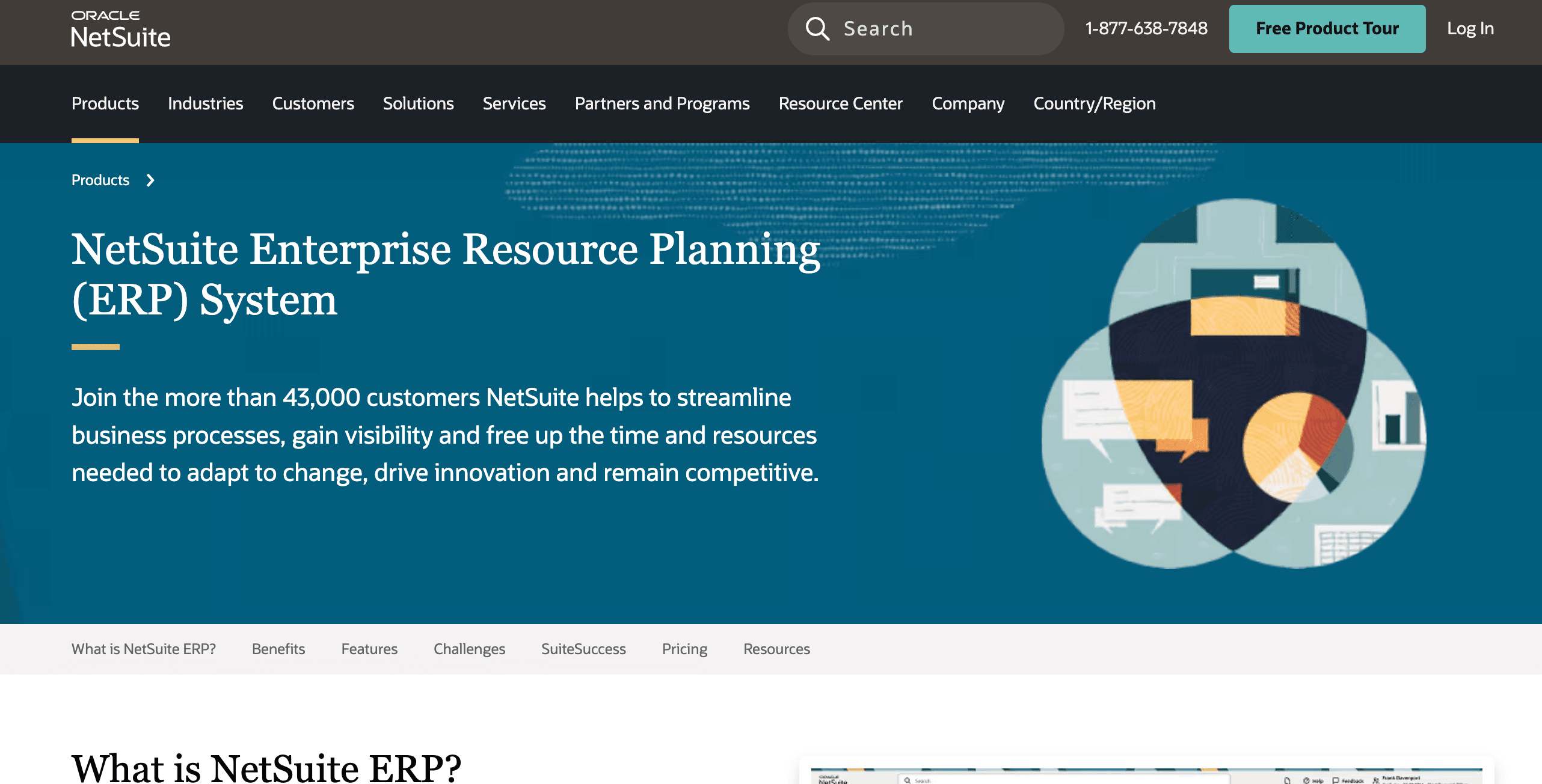
NetSuite ERP (by Oracle) is often hailed as the #1 cloud ERP platform, and it includes powerful real time inventory management software within its broad suite. NetSuite gives companies a unified system where inventory data updates instantly across financials, order management, and CRM modules.
The result is that sales teams, warehouse staff, and procurement all see the exact live inventory numbers.
- NetSuite’s real-time features include multi-warehouse visibility (view stock levels across locations in one system), automated reordering points, and extensive dashboard analytics for inventory KPIs.
- This makes NetSuite not just a tracking tool but also one of the comprehensive inventory management analysis tools for larger organizations.
- You can drill down into turnover rates, carrying costs, and profitability by item in real time.
Key integrations: NetSuite’s ecosystem and API allow integration with e-commerce platforms (Shopify, Magento, etc.), third-party logistics, and IoT devices for warehouse automation. It also has built-in EDI for supply chain connections.
Ideal for: medium to large enterprises that need a scalable, all-in-one solution.
3) TradeGecko (QuickBooks Commerce)
TradeGecko, rebranded as QuickBooks Commerce after its acquisition by Intuit, is a solution tailored for multi-channel inventory tracking, especially for businesses that use QuickBooks.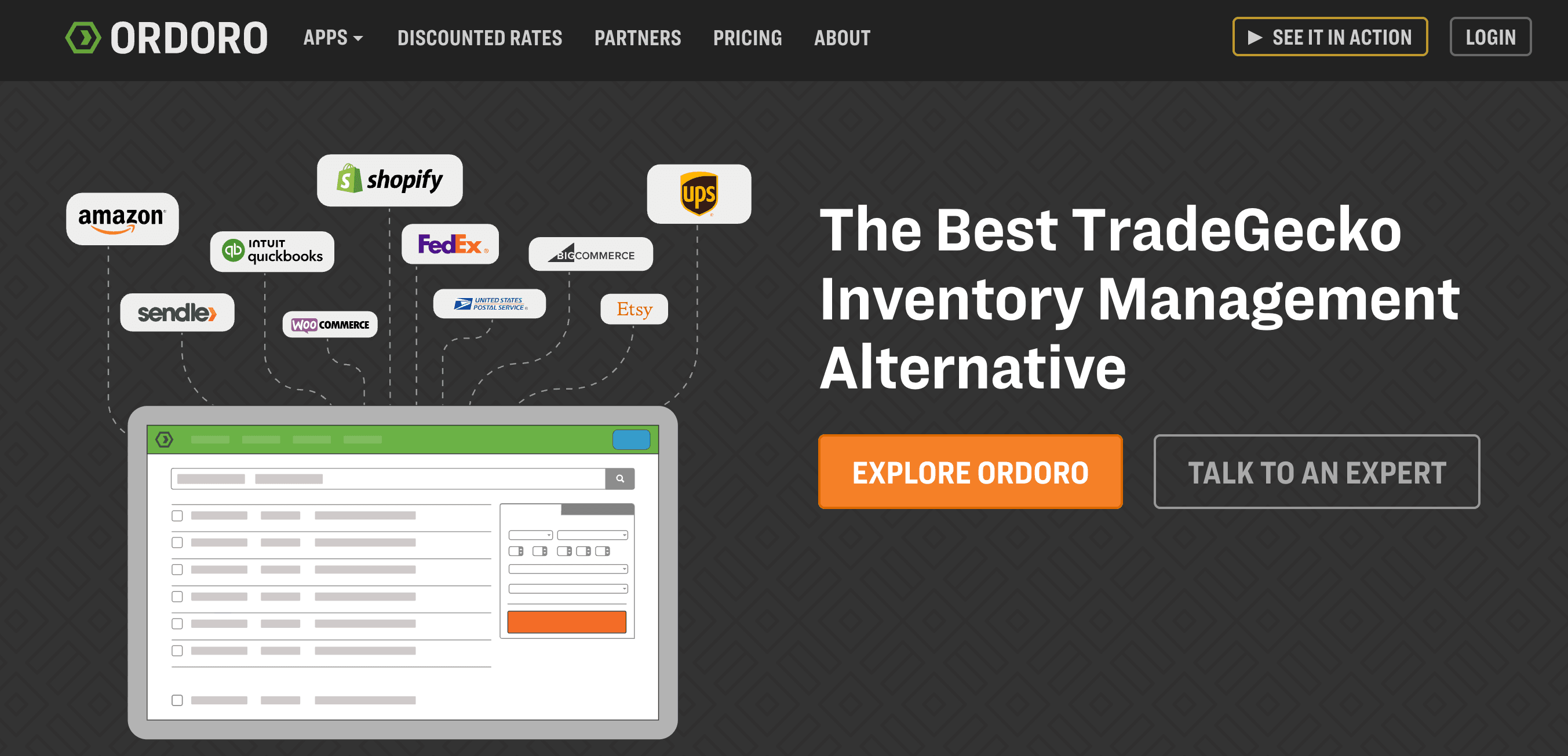
It keeps inventory counts updated in real time across your sales channels and automatically syncs with QuickBooks Online for accounting, which is a massive plus for finance visibility.
For example, suppose you sell an item on Shopify. In that case, TradeGecko will decrement stock immediately and can also generate an invoice in QuickBooks, ensuring your books and stock levels are always aligned.
- Its real time inventory management software include dashboards for sales and inventory, allowing you to analyze product performance and sales trends by channel.
- TradeGecko also offers a B2B e-commerce portal feature, which lets wholesale customers place orders directly.
- Inventory levels are shown as live, preventing overselling to big clients.
Key integrations: As part of the QuickBooks family, it connects deeply with QuickBooks Online. It also integrates with Shopify, WooCommerce, Amazon, eBay, Etsy, shipping solutions, and payment gateways.
Ideal for: small to midsize e-commerce companies and wholesalers. It’s suitable if you’re already in the QuickBooks ecosystem and want an integrated inventory tool.
4) Cin7
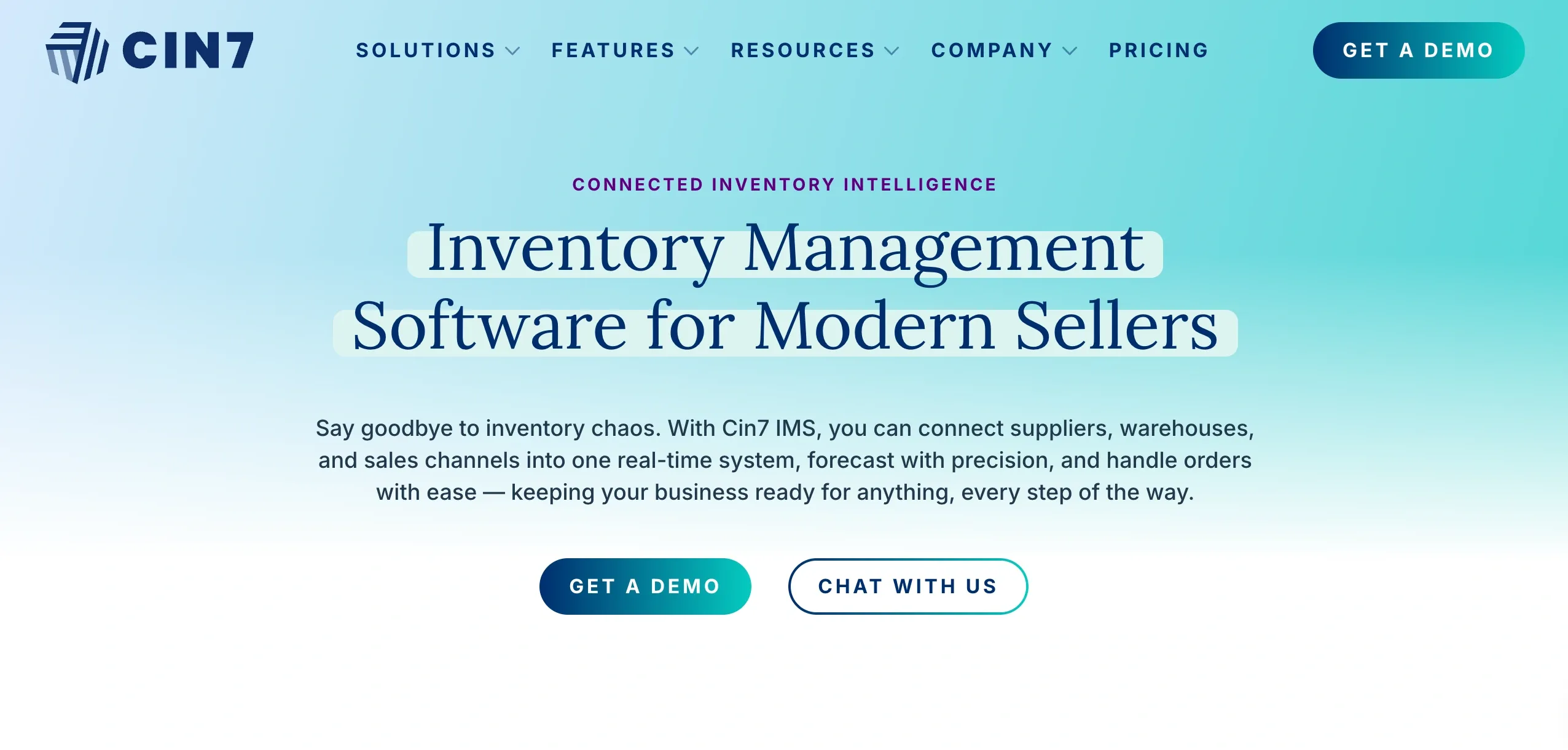
Cin7 is a robust inventory management platform geared toward retail and wholesale brands, known for unifying online inventory tracking and offline channels.
Cin7 provides real-time stock visibility whether you’re selling in a physical store (POS), through a webstore, or via marketplaces. When a sale or a stock transfer happens, Cin7 updates the inventory counts everywhere.
Its automation workflows are a standout: for instance, you can set rules to automatically route an online order to the nearest warehouse or trigger an alert to a supplier when stock is low.
- These real-time responses help prevent stockouts and streamline fulfillment.
- Cin7 also offers built-in point-of-sale, warehouse management, and light manufacturing capabilities (mainly if you use Cin7 Core, formerly DEAR Systems).
- As a modern inventory management analysis tool, it includes rich analytics – you can report on sales by channel, inventory turnover, and even pull up real-time profitability of bundles or kits.
Key integrations: Cin7 shines in e-commerce connectivity. It supports integrations with 20+ platforms like Shopify, BigCommerce, Amazon, eBay, and accounting systems like Xero and QuickBooks. It also connects to 3PL logistics providers.
Ideal for: retailers, wholesalers, or multi-channel brands that have outgrown essential inventory software.
5) Fishbowl Inventory
Fishbowl Inventory is a long-standing inventory tracking system, particularly popular with manufacturers and distributors using QuickBooks for accounting. Fishbowl extends QuickBooks by adding sophisticated inventory and warehouse features, all updated in real time.

When you receive products into your warehouse and scan them with Fishbowl, inventory counts update immediately and can be pushed to QuickBooks to keep financials in sync.
Fishbowl supports barcoding, work orders for light manufacturing, and lot/serial number tracking – so it’s well-suited for managing production or assemblies.
- Real-time features include instant stock level updates and inventory allocation to sales orders as they come in.
- Automatic reorder points that generate purchase orders when inventory falls below a set threshold.
- As an inventory management analysis tool, Fishbowl provides reporting on inventory valuation, manufacturing costs, and order fulfillment efficiency, helping businesses analyze their operations.
Key integrations: Fishbowl’s most substantial integration is with QuickBooks (Desktop and Online), often cited as its differentiator. It also integrates with Shopify, Magento, Amazon, eBay, shipping services, and even has an API for custom connections.
Ideal for: midsize companies in manufacturing, wholesale, or distribution, especially those in North America that need more than QuickBooks’ built-in inventory.
6) inFlow Inventory
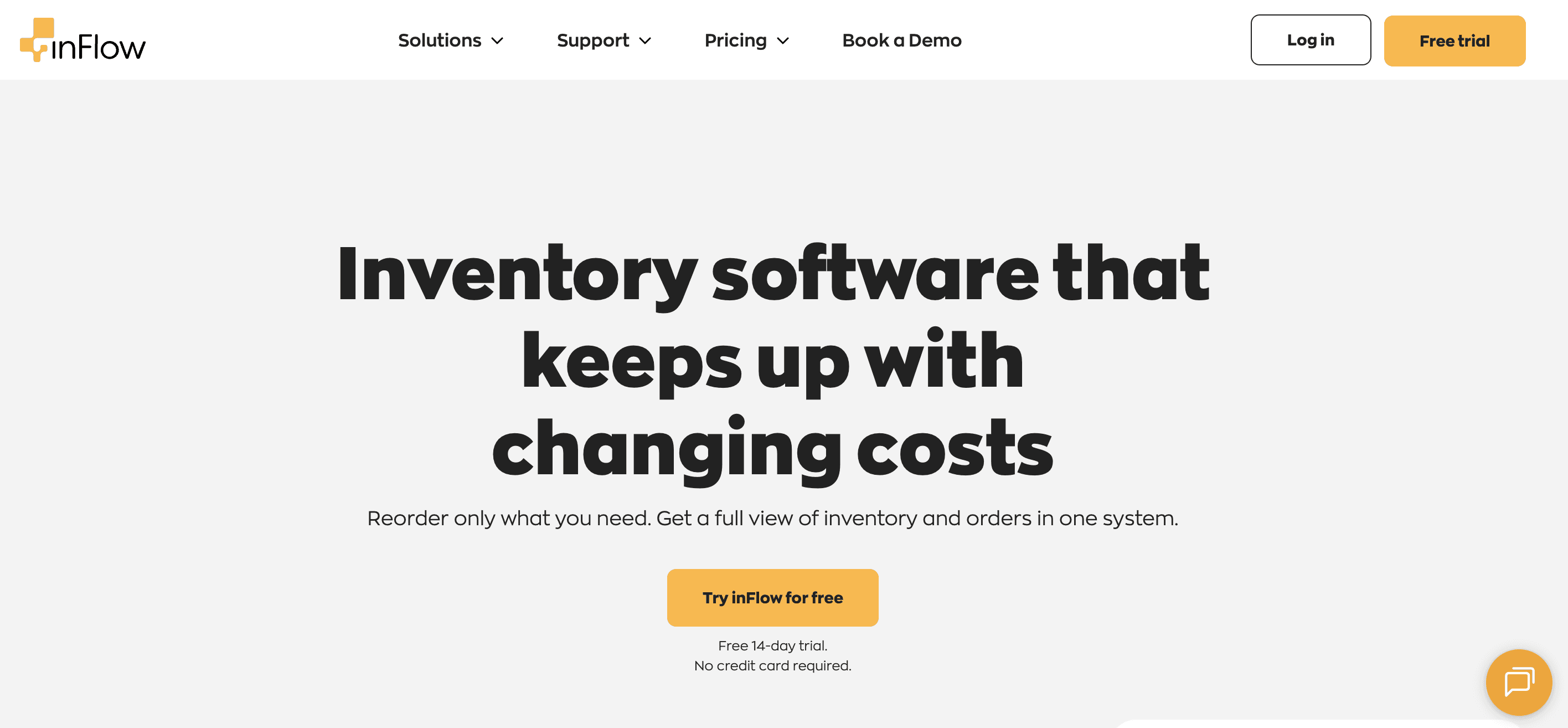
InFlow Inventory is a user-friendly inventory tracking software trusted by many small and mid-sized businesses worldwide. It offers both a cloud edition and an on-premise option, making it flexible for different needs.
inFlow is designed to deliver real-time inventory updates in an intuitive interface. For instance, if a sale is made or new stock is received, the system immediately reflects the new quantities on hand so your team always knows the current stock status.
- InFlow also supports barcode scanning (with its mobile app or USB scanners), so warehouse staff can scan items and instantly update counts, reducing manual errors.
- As one of the accessible inventory management analysis tools, inFlow includes built-in reports.
- Dashboards that help analyze inventory turnover, sales by product, and even forecast demand based on past data.
Key integrations: inFlow integrates with popular platforms like Shopify, WooCommerce, Amazon, and QuickBooks, enabling a two-way sync of orders and inventory levels. It also has an open API and connectivity through Zapier for other apps.
Ideal for: small businesses, startups, and growing mid-sized companies in wholesale, retail, or light manufacturing.
7) Ordoro
Ordoro is a comprehensive inventory and order management solution favored by e-commerce merchants. It offers real-time inventory tracking across multiple online channels and is known for its strong shipping and fulfillment features.

With Ordoro, when an item sells on one channel (say your Shopify store), it automatically reduces the available stock on all other channels (like Amazon or eBay) to prevent overselling – all in real time.
This ensures that your inventory counts are always accurate, no matter where you sell.
- Ordoro also handles shipping: you can print shipping labels (USPS, UPS, FedEx integration).
- Even set up dropshipping rules where orders can be routed to a dropship supplier without manual steps.
- As an inventory management analysis tool, Ordoro provides reports on sales, helping you analyze which products are profitable and how fast inventory is turning over.
Key integrations: Ordoro integrates with major e-commerce platforms such as Shopify, BigCommerce, WooCommerce, Amazon, eBay, Etsy, and more. It also connects to accounting software like QuickBooks and Xero to align financials with inventory movement.
Ideal for: small to medium-sized e-commerce businesses that need to manage orders and inventory in one place.
8) Odoo Inventory
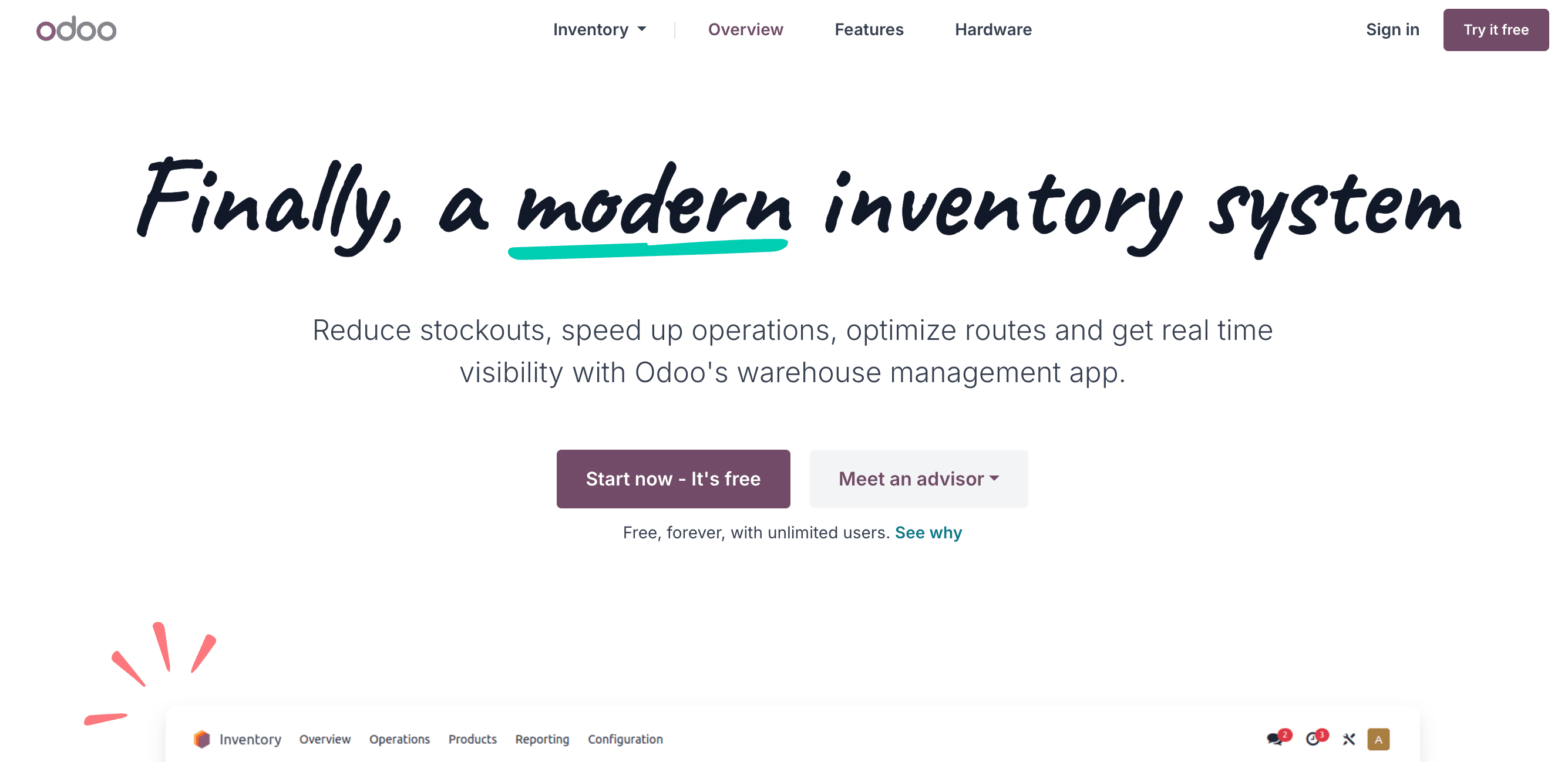
Odoo is an open-source ERP platform, and its Inventory module is a powerful real time inventory tracking system. Odoo’s inventory uses a double-entry inventory model (every stock move is an in-and-out transaction), which means the software maintains an always-accurate account of where your stock is.
When you receive products, Odoo updates available counts in real time; when sales orders are confirmed, those quantities are reserved or deducted instantly.
This real-time approach also extends to manufacturing – if Odoo is used for manufacturing, consuming a raw material in a production order immediately reduces its inventory.
- Key real-time features include automated replenishment, lots and serial number tracking for traceability, and real-time reports on stock levels by location.
- Because it’s part of a complete ERP, Odoo Inventory can serve as an integrated inventory management analysis tool.
- It provides dashboards for inventory valuation, forecasted stock, and even the age of inventory, which helps identify slow movers.
Key integrations: Odoo’s strength is in its modular integration; Inventory connects natively with Odoo Sales, Purchase, Manufacturing (MRP), eCommerce, and Accounting. Odoo has a rich app store for third parties – you’ll find connectors for Amazon, eBay, shipping carriers, and more. APIs allow custom integrations (many Odoo users have their instance tailored by Odoo partners).
Ideal for: companies of all sizes that need a flexible, customizable system.
9) Katana MRP
Katana MRP is a newer cloud-based manufacturing inventory and production management platform. It provides a real-time master planning system so that manufacturers always know what’s in stock, what’s in production, and what’s needed for open orders.

In Katana, raw materials and finished goods are tracked in real time. If a new sales order comes in, Katana’s Auto-booking feature immediately allocates available raw materials to the order’s production, and you can see if you have enough stock to fulfill or need to purchase more.
This instant visibility into availability is a game-changer for makers and factories that previously relied on spreadsheets.
- Katana’s dashboard gives a live view of the production pipeline – you can see which jobs are in progress and the exact inventory status of components.
- It essentially combines real-time inventory tracking software with manufacturing resource planning.
- As an inventory management analysis tool, Katana offers analytics on production efficiency, inventory turnover, and cost of goods sold, helping businesses spot bottlenecks and cost overruns in real time.
Key integrations: Katana integrates out of the box with Shopify, WooCommerce, Amazon, and Etsy for sales orders, as well as with accounting tools like QuickBooks Online and Xero for financial syncing. It also has an API for custom integrations (some use it to connect Katana with IoT devices on factory floors or with advanced warehouse systems).
Ideal for: small and mid-sized manufacturers, artisans, or product brands that do their production, think industries like food and beverage, cosmetics, electronics, apparel, or workshops.
Final Verdict: Choosing the Right Inventory Software
Implementing a real time inventory tracking software from this top 9 list can be transformational for a business. These tools bring a new efficiency level by automating manual inventory tasks and providing instant visibility into stock movements.
The improved visibility doesn’t just help operations; it enhances decision-making at the strategic level. Managers gain access to inventory management analysis tools like dashboards and forecasts, enabling data-driven decisions that align inventory with sales and production plans.
Whether you’re a retailer preventing omnichannel stockouts with Zoho or Cin7, a manufacturer syncing production with sales using Katana or Fishbowl, or an enterprise tying inventory into a complete ERP like NetSuite or Odoo, the end goal is the same: greater efficiency, end-to-end visibility, and higher profitability.
It’s also worth considering how these inventory systems can work with other emerging solutions.
For instance, AppsRhino provides custom mobile app development that can integrate with your inventory software, enabling field sales, delivery, or warehouse staff to update data in real time. These tailored apps improve operational efficiency, reduce errors, and enhance visibility across your supply chain.
In conclusion, adopting the right real-time inventory tracking solutions for factories USA (and surrounding it with smart integrations) is a strategic move toward operational excellence in 2026 and the years to come.
Frequently Asked Questions
Which platforms offer real-time inventory tracking?
Top platforms offering real-time inventory tracking include Zoho Inventory, NetSuite ERP, Cin7, QuickBooks Commerce, and TradeGecko, providing live stock updates, order syncing, and automated inventory management.
How to track inventory in real time?
You can track inventory in real time using inventory management software integrated with barcode scanners, RFID, or IoT sensors that automatically update stock levels across sales channels.
What is the best software to keep track of inventory?
The best inventory tracking software is Zoho Inventory, offering automation, reporting, and multi-channel stock synchronization.
Is Zoho Inventory really free?
Yes, Zoho Inventory offers a free plan with limited orders and shipping labels, ideal for small businesses, while advanced features require paid subscription plans.
Which technology helps track inventory levels in real time?
Technologies like RFID, IoT sensors, barcode scanning, and cloud-based ERP systems help businesses track inventory levels in real time with accurate and automated updates.
How does real-time inventory tracking software handle backorders automatically?
Real-time inventory tracking solutions can auto-convert orders into backorders when stock is unavailable, then notify customers or suppliers in real time, avoiding manual intervention and improving fulfillment transparency.
Can inventory management analysis tools predict seasonal demand accurately?
Modern inventory management analysis tools use AI and past sales data to predict seasonal trends, helping businesses stock smartly and reduce holiday overstock or post-season waste.
Is RFID better than barcodes for real-time inventory tracking?
RFID allows bulk scanning without line-of-sight, making it faster than barcodes for real-time inventory tracking. However, it's costlier and best suited for large-scale or high-value stock environments.
Which inventory control platforms offer interactive reporting and real-time dashboards?
Top inventory control platforms with interactive reporting and real-time dashboards include Zoho Inventory, NetSuite ERP, Cin7, Fishbowl, and TradeGecko, enabling instant analytics, trend tracking, and performance monitoring.
What mobile features should real time inventory tracking software offer?
Look for mobile scanning, cloud dashboards, low-stock alerts, and offline syncing. These help warehouse teams track stock accurately even on the go, boosting agility and responsiveness.
Do real time inventory tracking tools work with dropshipping?
Absolutely. Most real time inventory tracking software supports dropshipping workflows, auto-updating supplier stock, routing orders directly, and syncing delivery updates across eCommerce channels.
Which solutions are considered the most dependable for cross-channel inventory traceability?
Dependable solutions for cross-channel inventory traceability include Oracle NetSuite, SAP SCM, Zoho Inventory, Cin7, and TradeGecko, offering unified tracking, real-time visibility, and seamless multi-channel synchronization.
Can real-time inventory tools help with compliance and traceability?
Inventory management analysis tools enable lot and serial tracking in regulated industries. They log every item movement, aiding audits, recalls, and compliance with FDA or EU traceability laws.
Table of Contents
- The Best 9 Real-Time Inventory Tracking Software
- Final Verdict: Choosing the Right Inventory Software
- Frequently Asked Questions



